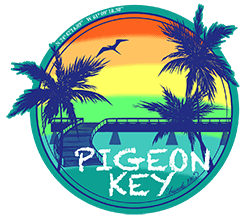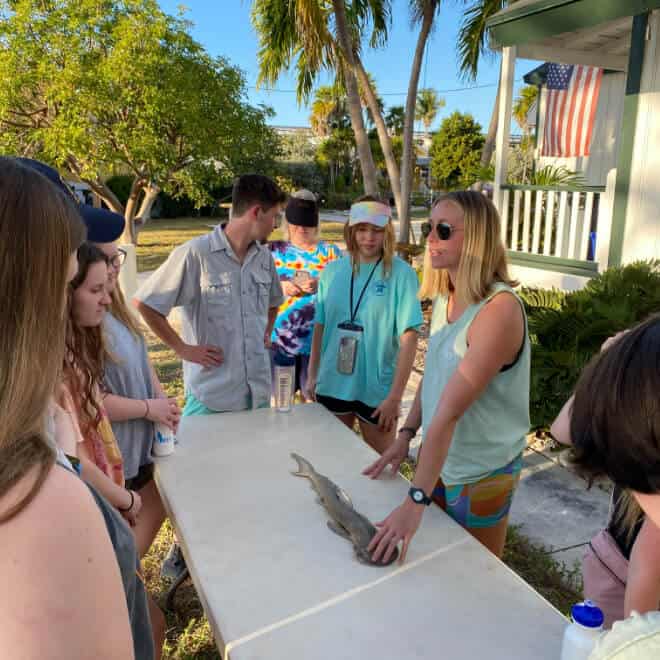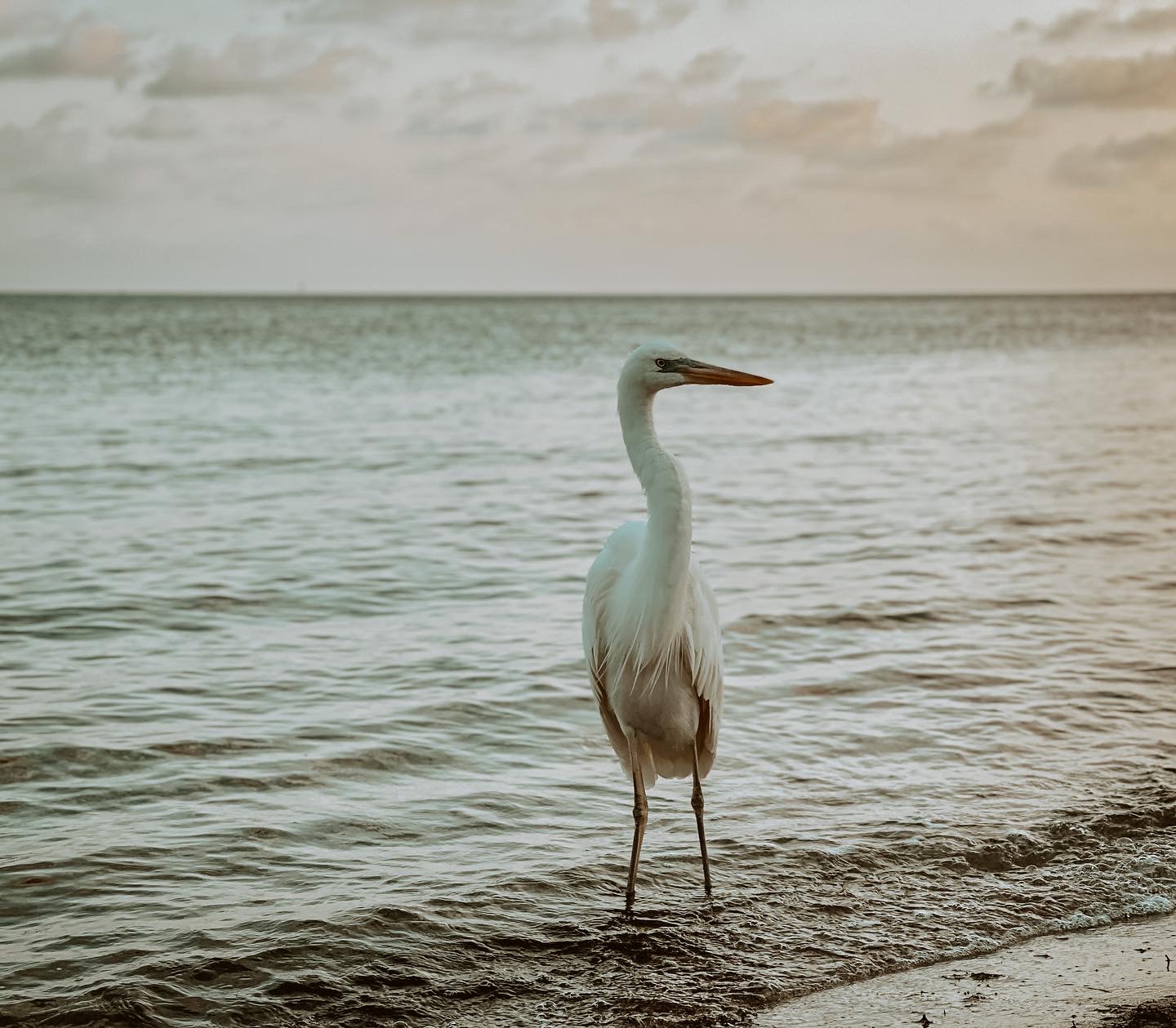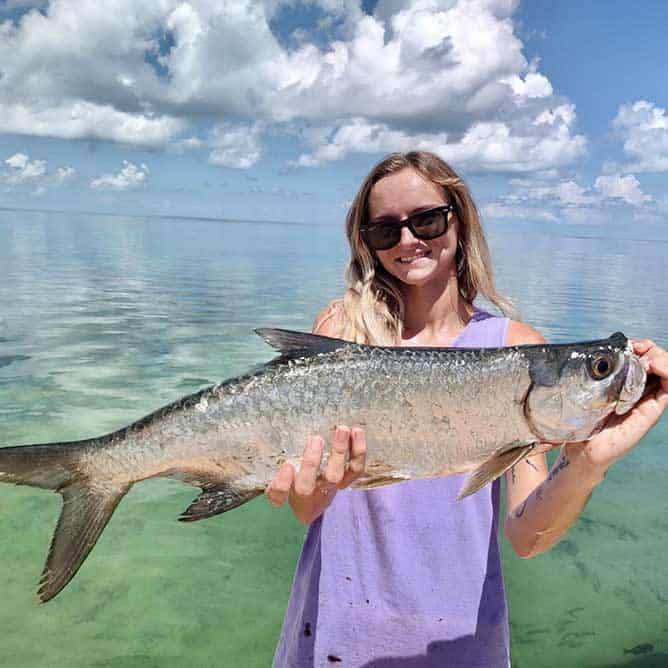There are many shark species that can be found in South Florida, but one we often encounter around Pigeon Key is the Bonnethead shark. These sharks can be found on both coasts of North America and their habitats include sandy mud flats and shallow waters. Not only can we find them swimming along the edges of the island in the seagrass beds, but the saltwater pool on Pigeon Key also houses a handful of them, and visiting students are led in a dissection of one that was donated to us!
Although closely related, the Bonnethead shark is typically misidentified as a young Great Hammerhead shark. While many sharks can grow quite large, the bonnethead only grows to around three to four feet in length. This often contributes to people thinking they are a juvenile Great Hammerhead shark. The two both show cephalofoiling, or rounding of the head, that increases their spatial awareness in the ocean while searching for food.
To help them hunt, sharks have a specialized nerve net called the Ampullae of Lorenzini, which is centered around the face of sharks and can detect electromagnetic fields, such as those generated by prey. The Bonnethead shark will use its round head and the Ampullae of Lorenzini to find food such as crabs, shrimp, mollusks, and small fish.
Sharks have three different types of reproductive strategies: oviparity, viviparity, and ovoviviparity. Oviparous, or egg-laying, reproduction produces egg cases that sailors called “mermaids’ purses” because they looked like a bag floating through the water. The sharks will grow within the egg sack, feeding off the yolk, until they are large enough to break through the casing with a specialized tooth or horn that allows them to rip through it and begin their lives.
Viviparous, or live-birth, reproduction is similar to mammalian reproduction. After fertilization, the female shark provides nutrients to the fertilized eggs inside of her until they are ready to be birthed. When Bonnethead sharks reach sexual maturity at approximately two years of age, they can produce anywhere from four to fifteen pups through live birth! Relative to other shark species, they have a quick reproduction rate, which allows their population numbers to remain high.
Finally, ovoviviparity is a combination of the first two strategies, in which the sharks begin growth inside of eggs that are held within the female shark. Then, once large enough, they will start to hatch internally. Usually the first shark to hatch begins eating the unhatched eggs around it, which provides it with more nutrients and its first hunting practice. Then the female shark will give birth to the live young.
The Bonnethead is the only species of shark that shows sexual dimorphism, where the females look different from males (found in the head shape). They are also thought to be the only sharks that could survive on an entirely herbivorous diet! While many shark populations are in decline by 70-90% due to a variety of factors including being killed for shark fin soup, caught as bycatch, or killed for sport, the Bonnetheads are labeled as “Least Concerned” on the endangered species list. However, they are still caught as bycatch and suffer from habitat loss.
Pigeon Key’s marine science education team is able to educate students on the Bonnethead and many other sharks that are right in our backyard! We often see sharks during bridge walks, and students get to participate in a shark dissection using a Bonnethead shark that was caught accidentally and donated to Pigeon Key. Visiting education groups also get to feed the sharks and fish housed in our saltwater pool after learning all about shark biology!




